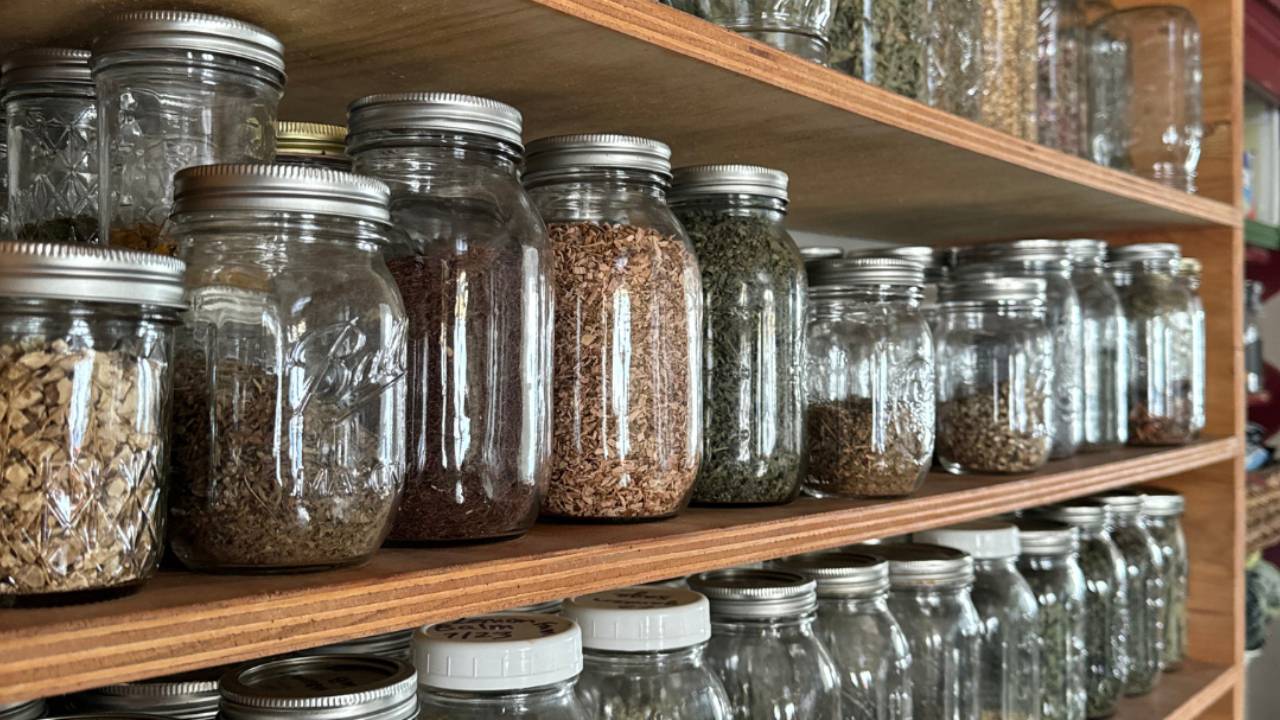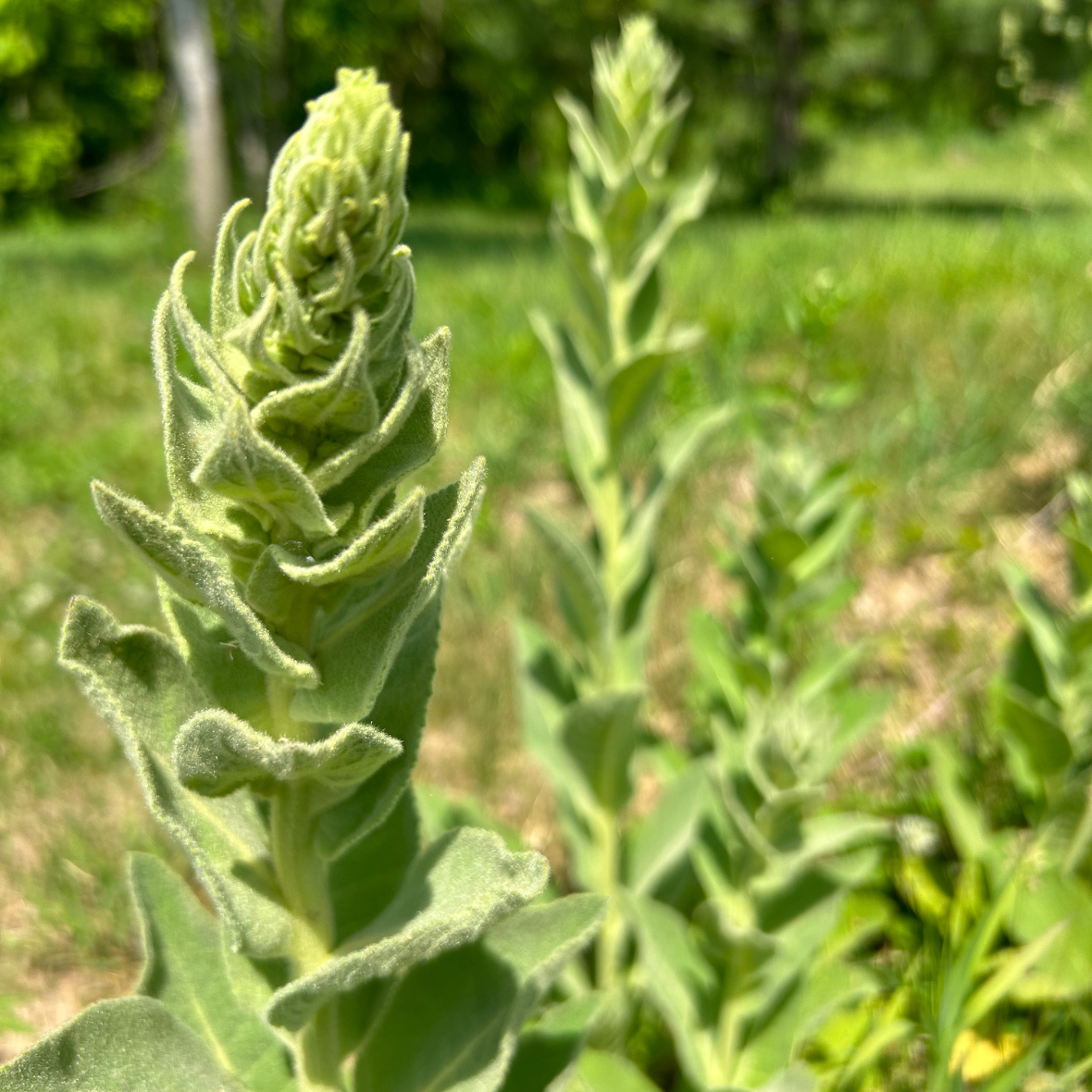
The BEST Medicinal Herbs To Grow At Home
So, you want to grow medicinal herbs to build an herbal medicine cabinet. That’s great! Building an herbal medicine cabinet is a practical, empowering, and cost-effective way to care for your family’s health. It means taking control of your health in a natural, reliable, and effective way. Instead of relying on over-the-counter products filled with synthetic ingredients, you’ll have access to a natural pharmacy right outside your door.
When you grow your own herbs, you control the quality, freshness, and availability of your natural remedies. Plus, you’ll never have to panic-buy cough syrup or antacids again. But how do you know what the best medicinal herbs to grow at home are?
Everyone’s apothecary will look different. Why? Because it depends on your family’s unique needs. Some households might need more herbs for digestive support, while others focus on respiratory health or stress relief.
Still, some key categories are universal in all households. The herbs used in these categories deserve a spot in every home garden because they cover such a wide range of common health concerns. Let’s jump into it…
Growing vs. Buying Medicinal Herbs
First things first, we need to talk about why growing herbs is so much better than buying herbal products from the store.
If you’ve ever read the back of an over-the-counter medicine bottle, you probably noticed a list of unpronounceable ingredients. Many commercial remedies contain synthetic versions of plant compounds …so why not go straight to the source?
Utilizing fresh herbs or freshly preserved herbs ensures you are getting their highest possible potency locked into your herbal preparation. So what does that mean? Grow all the herbs!
Though we may want to, we can’t grow everything. Weather, soil conditions, rainfall amounts….there are so many factors that come into play when you’re figuring out what you can and cannot grow.
Sometimes it seems like just buying the herbs is the better choice. And in some cases, that’s true. Even as an herb farmer, there are some herbs that I purchase instead of growing. But, there’s simply nothing better than growing as much as you can yourself, for so many reasons:
- Freshness and potency: Dried herbs from the store may sit on shelves for months, losing medicinal properties. Fresh leaves, roots, and flowers are the most potent.
- Cost-effective: A whole year’s worth of seed packets often costs less than a couple of bags of store-bought herbs or one bottle of herbal supplements.
- Self-sufficiency: When supply chains falter, your home garden remains reliable.
- Customization: Your garden reflects your household’s specific health needs.
5 Essential Categories of Medicinal Herbs to Grow at Home
To build a well-rounded, versatile herbal medicine cabinet, focusing on five key categories of herbs is a really great place to start. These topics are things that all families deal with from time to time and everyone should be prepared to deal with them. Let’s explore each one in detail, along with the best herbs to grow and how to use them.
Respiratory Support: Herbs for Respiratory Health

Respiratory issues are among the most common health concerns, especially during cold and allergy seasons. If you’re battling congestion or managing asthma, or get hit with the flu, these herbs provide powerful respiratory support:
- Stinging Nettle (Urtica dioica): This perennial plant is famous for its antihistamine and anti-inflammatory properties. Nettle helps combat hay fever, asthma, and seasonal allergies. It also supports healthy immune function and overall health.
- Mullein (Verbascum thapsus): This tall, fuzzy-leaved perennial tones the lung tissue, calms dry coughs, and soothes irritated airways. The leaves, flowers, and roots all have different jobs. You can read more about Mullein in this post and how to use it during its first and second year of growth.
- Hyssop (Hyssopus officinalis): An amazingly powerful natural expectorant, hyssop helps loosen mucus and relieve chest congestion.
- Elecampane (Inula helenium): Traditionally used in Native American and traditional Chinese medicine, elecampane supports deep lung healing and soothes chronic bronchial irritations, and loosens mucus causing issues from asthma and bronchitis.
How to Use Them:
- Make teas, tinctures, steam inhalations, or herbal syrups for colds, coughs, and seasonal allergies.
- They can be used together or individually based on your needs.
- Dry and store leaves for later use during cold and flu season.
- When using respiratory herbs in a tea, be sure to drink it as warm as you comfortably can.
Growing Tips: These herbs thrive in full sun with well-drained soil. Mullein and elecampane are tall, making them perfect for the back of a garden bed or fence line.
Trauma Care: Herbs for Wounds, Bites, and Bruises

Accidents happen, so keeping herbs on hand to treat wounds, bruises, and burns is essential. Nature offers an impressive first aid kit. These herbs help promote healing, ease pain, and prevent infection:
- Yarrow (Achillea millefolium): Famous for its ability to stop bleeding fast, yarrow also has antibacterial and anti-inflammatory properties.
- Plantain (Plantago major): One of the best medicinal herbs for bites, stings, and skin irritation. The fresh leaves work wonders when chewed and applied to wounds. Fresh plantain leaves also soothe and draw out toxins which is a traditional remedy for insect bites, stings, and some plant reactions.
- Lavender (Lavandula angustifolia): Known for its soothing aromatic properties and antibacterial properties, lavender supports healing in burns, cuts, and minor infections.
- Comfrey (Symphytum officinale): Known as “knit bone,” comfrey supports healing for sprains, bruises, and even broken bones and makes an excellent salve. It works FAST, so do not use comfrey on deep or penetrating wounds as it may trap bacteria in the wound and cause an infection.
- Horsetail (Equisetum arvense): Packed with silica, horsetail strengthens connective tissue and supports recovery from fractures, torn ligaments, and joint injuries.
How to Use Them:
- Apply yarrow and plantain as a poultice directly to cuts and stings.
- Make infused oils, salves, or poultices for muscle injuries and burns.
Growing Tips: These herbs thrive in various soil types. Comfrey needs rich, moist soil. Yarrow thrives even in poor soil and is very low-maintenance. This makes them easy to grow and maintain in a home garden. Yarrow, lavender, and plantain thrive in various soil types. Comfrey needs rich, moist soil to flourish.
Gut Health: Herbs for Digestive Wellness

The digestive system is arguably the most important system in the body. More than 80% of your immune system lives in your gut. Gut health affects everything from energy to mood, to immunity, and even skin clarity. If your gut is not healthy, it opens the door for everything from eczema to autoimmune disease. A well-rounded medicinal garden should support as many parts of the digestive system as possible. These easy to grow herbs are a great start:
- Dandelion Root (Taraxacum officinale): Protects the liver and promotes healthy function, healthy bile production, and eases bloating.
- Peppermint (Mentha × piperita): Soothes nausea, heartburn, gas, and stomach cramps.
- Marshmallow Root (Althaea officinalis): Coats and soothes the digestive tract, relieving acid reflux, leaky gut, and stomach pain. Its mucilaginous nature coats and protects the stomach lining.
- Chamomile (Matricaria chamomilla): A gentle, kid-friendly remedy for colic, indigestion, gas, and cramping. It’s also a very soothing herb for the nerves and helps with sleep. For those who deal with motion sickness, chamomile tincture can help to settle the stomach as well.
- Plantain (Plantago major): The astringent property in plantain supports the healing of the gut lining the same way it promotes healing for the skin with cuts, scrapes, bites, and stings. It also offers tremendous help with the lung lining after smoke inhalation.
How to Use Them:
- Infuse teas for upset stomachs, bloating, and cramps.
- Create tinctures or syrups for chronic digestive issues.
- Cold infuse marshmallow root for the best use of its mucilage.
Growing Tips: Peppermint spreads aggressively, grow it in containers to control the spread. Chamomile thrives in sun and well-drained soil. Plantain and Dandelion grow wild and can be foraged.
Skin Care: Herbs for Healthy, Radiant Skin

Healthy skin starts from within, but growing these herbs ensures you have powerful topical products for daily use. They make an excellent addition to a first aid kit for irritation, rashes, and general skin support…minus the harsh chemicals in all those expensive commercial products:
- Calendula (Calendula officinalis): A favorite way to promote healing in wounds, rashes, and skin irritation. Its flowers contain antibacterial and anti-inflammatory properties.
- Lavender (Lavandula angustifolia): Great for burns, acne, eczema, and bug bites. Lavender’s essential oil reduces pain and supports skin regeneration.
- Bee Balm (Monarda didyma): Antibacterial and antifungal, bee balm helps treat minor skin infections and rashes.
How to Use Them:
- Infuse herbs into olive, castor, or sweet almond oil for topical use or to create skin care products.
- Create salves with beeswax and infused oils.
- Create herbal tea blends to drink these delicious herbs and nourish your skin from the inside out.
Growing Tips: Calendula and lavender thrive in sunny spots with well-drained soil. Bee balm is a wild growing herb that can be foraged or grown. Use the flower heads of all these plants.
Emotional Health: Herbs for Stress, Sleep, and Relaxation

Mental well-being is just as important as physical health. These herbs help calm the nervous system, improve sleep, soothe a nervous gut, and lower anxiety.
- Lemon Balm (Melissa officinalis): An aromatic perennial that helps lower blood pressure, reduce anxiety, and promote restful sleep.
- Holy Basil (Ocimum sanctum): Popularly known as tulsi, this herb has adaptogenic properties that help the body manage stress, help it lower blood pressure, and promote mental clarity.
- Chamomile (Matricaria chamomilla): German chamomile helps to decrease stress, and promotes relaxation and sleep while soothing an upset stomach.
- Black Cohosh (Actaea racemosa): Traditionally used for menstrual cramps, mood swings, and hormonal balance.
How to Use Them:
- Drink these herbs in a tea for their supportive properties.
- Create tinctures for a concentrated preparation.
Growing Tips: Lemon balm and holy basil love sunlight and well-drained soil. Black cohosh prefers partial shade and moist, rich soil.
What Else Should You Grow?
Like we talked about earlier, every herbal medicine cabinet looks different because every family has unique needs. Some might focus on liver support with herbs like milk thistle. Others may want immune boosters like echinacea and elderberry.
If you’re new to growing medicinal herbs, start with the ones that address your family’s most common health concerns. Pay special attention to your soil type, the sunlight requirements of your plants, and your growing zone to be sure you can grow successfully. If you do not know what your growing zone is, you can check the USDA site.
A well-stocked herbal medicine cabinet brings peace of mind and a connection to natural remedies. Growing your own herbs allows you to harvest the highest quality plants. Start with these five categories, then expand based on your family’s needs.
What medicinal herbs are you growing this year? Drop a comment below and let me know!
Don't miss a thing!
New herbal education and recipes delivered to your inbox.
We hate SPAM. We will never sell your information, for any reason.
